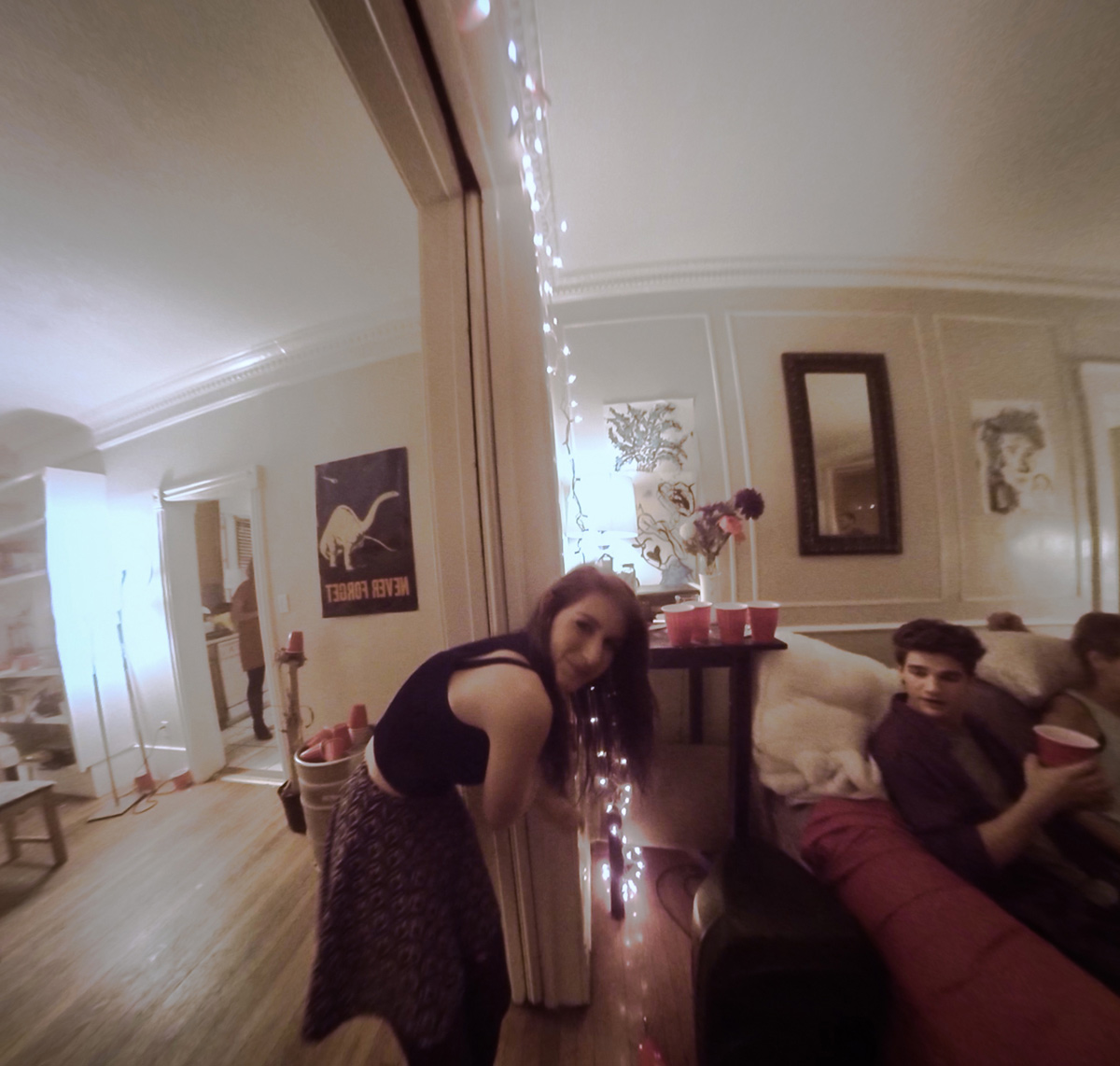Sundance 2015: New Frontier’s Virtual Reality
Filmic experience “Perspective; Chapter 1: The Party” couples innovative technology with emotional gravity


Virtual Reality (VR) experiences were highly sought after at this year’s Sundance—with New Frontier Exhibitions, the cutting-edge art and storytelling division of the festival, offering an array of otherworldly experiences. There, attendees could fly like never before on a custom simulator or stand in a field of roaming buffalo, with almost no limitations to the visual depths and dimensions. And the technology for each installation was built to accommodate the story, not the other way around. Carrying the most weight of all the superb VR works, and emphasizing the storytelling element first and foremost, was Rose Troche and Morris May’s “Perspective; Chapter I: The Party.”
The nine-minute filmic experience employs two Oculus Rifts, situated within two side-by-side rooms decorated much like a frat house living room and bedroom. Troche, an acclaimed writer for film, TV and new media, penned and directed two four-minute pieces showcasing the exact same scenario—only each is told from a different perspective. The viewer begins as a college-aged boy, interacting with friends at a party. The viewer finishes as a college-aged girl, doing much the same. A rape occurs in the midst of the storyline. Living both sides of the experience in the first person, as alcohol is consumed and vision blurs, imparts a truly one-of-a-kind level of emotional gravity. There’s no unreliable narrator here, only a dynamic evolution of perspective while immersed in the story’s world.

Before and after experiencing “Perspective; Chapter 1: The Party,” we spoke with Troche and May to learn more about the process. May, the CEO of Academy Award-winning special effects house Specular Theory had heard New Frontier was seeking VR pieces and brought forward work with Troche, and introduced the idea of perception and perspective. When interest soared, they set to work on creating the piece. As for how Troche approached writing within the boundaries of a new medium, she shares, “I think part of it was being dumb about what the parameters were. And then working with a really wonderful partner who kind of sees the obstacles and sees the ways to smash them.” It initially began as a scenario set at a table. “That’s kind of where the technology was at the time, you sit around the table and something happens. You experience it through each person’s point of view at the table. We moved from there to, ‘Can we move the camera more? Can I see my hands?'”
As they explored the potential of the storytelling, May then says that he “literally built the camera and editing from the ground up to tell this story. Some things were really close [with the technology], like seeing through someone’e eyes and feeling like you are that someone.” Other factors required more developments. “There was an ending that we had,” Troche shares, “where she looks at herself in the mirror. We can’t do that from a storytelling perspective. You can’t empathize with her. That would be a separating moment so we were avoiding those things.” However, “using the technology to look down her body” became an answer that affixed viewer to character. “When we first talked, we couldn’t do that technically but Morris created a camera that allows for close-ups.” In fact, May says it best regarding his technical advancements for close-ups in virtual reality: “we helped nestle that into existence.”
This blending of story and technology will continue to define the way content is consumed and developed in the future. In fact, Troche and May are already working on their second chapter, which involves a crime, a cop and a witness. There is a tangible impact point for this application of VR: perception and perspective. And while New Frontier is pioneering this, the implications are vast.
Images courtesy of New Frontier












